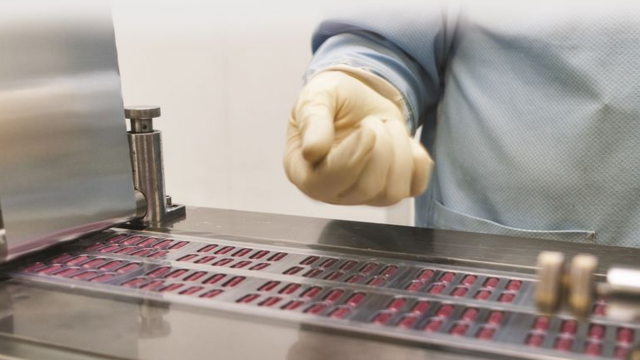November 20, 2025 : In a groundbreaking development, the Indian government has officially launched its first indigenous CRISPR-based gene therapy targeting Sickle Cell Disease (SCD) — a move hailed as a major step forward in genomics and public health. Named BIRSA 101, the therapy was unveiled by Union Minister for Science and Technology, Dr. Jitendra Singh, at the CSIR – Institute of Genomics & Integrative Biology (IGIB) in New Delhi.
Why This Is Big
Sickle Cell Disease is a serious inherited blood disorder in which the red blood cells assume a sickle or crescent shape, leading to chronic anaemia, painful episodes, organ damage, and reduced life expectancy. In India, the disease disproportionately affects tribal populations, particularly in central and eastern regions, making this therapy a public health priority.
Historically, gene therapies have been developed by a few global biotech giants, often at a very high cost — sometimes running into ₹20–25 crore (~ US$ 2–3 million) per patient. The newly developed BIRSA 101 is expected to be drastically more affordable, thanks to its indigenous development.
The Science: How BIRSA 101 Works
The therapy is based on CRISPR gene-editing technology, using a platform called enFnCas9 developed by IGIB scientists. In simple terms, scientists take a patient’s stem cells (blood-forming cells), edit the sickle-cell mutation in the lab, and then reinfuse the corrected cells back into the patient. Over time, these edited cells generate healthy red blood cells, potentially offering a one-time, long-lasting cure.
Dr. Singh described this process as a form of “precise genetic surgery,” noting that it could not just treat SCD but also pave the way for therapies for other hereditary disorders.
Public–Private Partnership for Scale
To ensure the therapy reaches those who need it most, IGIB has signed a technology transfer agreement with the Serum Institute of India (SII). SII will work on scaling up the production of the therapy using the CRISPR platform, making it more widely available and cost-effective.
This partnership reflects a broader strategy: combining government-funded research institutions with India’s powerful biotech industry to deliver cutting-edge medical innovations to the public. Dr. Singh highlighted the importance of such synergy, comparing it to India’s success in vaccine development.
Clinical Trials for Tribal Populations
Clinical trials are set to begin soon, with a particular focus on tribal communities that carry a high burden of the disease. According to CSIR-IGIB, an initial pool of around 150 potential participants has already been identified in states like Madhya Pradesh, Chhattisgarh, Jharkhand, and others.
As part of the trials, bone marrow (or stem cell) extraction will be done at AIIMS, Delhi, while the gene-editing work will be handled at IGIB’s specialized facility. Regulatory approval and ethical clearance are being handled in collaboration with agencies including the Department of Biotechnology (DBT), Department of Science & Technology (DST), and the Drug Controller General of India (DCGI).
Cost Advantage: A Game Changer
Global gene therapies for SCD have been plagued by prohibitively high costs, often putting them out of reach for patients in low- and middle-income countries. By contrast, BIRSA 101 is expected to be available at a fraction of international costs, making it more accessible for India’s high-risk tribal population.
Dr. Umesh Shaligram, Executive Director at the Serum Institute, emphasized that such cost-effectiveness is central to the mission — “taking Indian innovation and making it accessible for the poorest of the poor.”
A National Mission & Vision
The launch of BIRSA 101 aligns with India’s broader goal to eradicate sickle cell disease by 2047, a target set under the National Sickle Cell Anaemia Elimination Mission. Calling the launch a “historic turning point,” Dr. Singh said it signified India’s entry into advanced genomic medicine.
Challenges & Risks
While the development is remarkable, experts caution that several challenges remain:
- Regulatory hurdles: Ensuring safety and efficacy is critical, particularly with gene-editing therapies.
- Long-term monitoring: Patients treated in trials will need lifelong follow-up to confirm that the edited cells remain safe and effective.
- Scalability: Though technology transfer to Serum Institute is underway, scaling up to reach remote tribal regions will be a significant task.
- Ethical concerns: Gene editing raises ethical questions, especially around heritable changes and equitable access.
Looking Ahead
If successful, BIRSA 101 could transform the treatment of sickle cell disease in India. But more than that, the therapy could serve as a blueprint for future indigenous gene therapies targeting other genetic disorders widely prevalent in India. The enFnCas9 platform, IGIB scientists note, could be adapted to treat other inherited diseases in the future.
Dr. Singh also noted that part of the mission now is to communicate this breakthrough in “simple, accessible language” so that tribal communities and the broader public can understand its potential.
Conclusion
India’s launch of BIRSA 101 marks a watershed moment in public health and genomic research — signaling that affordable, high-tech gene therapies are no longer the preserve of wealthy countries. With tribal communities at the heart of this initiative, the therapy also underscores a deeply social mission: not just to cure a disease, but to democratize access to cutting-edge medicine.
Summary
India launches its first indigenous CRISPR-based gene therapy, BIRSA 101, to tackle sickle cell disease, especially in tribal populations. The therapy aims to be low-cost, scalable, and permanently curative.


